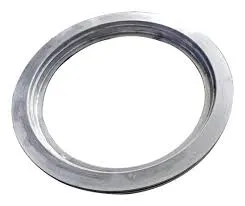सप्टेंबर . 06, 2024 00:47 Back to list
Most Common Aluminium Alloys
The Most Common Aluminum Alloys A Comprehensive Overview
Aluminum alloys are essential materials in modern engineering, owing to their excellent combination of strength, weight, corrosion resistance, and machinability. The popularity of aluminum alloys stems from their versatility in various applications, from aerospace to automotive and construction. Understanding the most common aluminum alloys can provide insight into their specific uses and advantages.
Aluminum alloys are categorized mainly into two groups wrought and cast alloys. Wrought alloys are processed by mechanical means, while cast alloys are formed by pouring molten aluminum into molds. Each category is designated with a four-digit code, with the first digit indicating the major alloying element.
The Most Common Aluminum Alloys A Comprehensive Overview
The 2000 series includes copper as the main alloying element and is known for its high strength and excellent machinability. Alloys such as 2024 are famously used in the aerospace industry for aircraft structures due to their favorable strength-to-weight ratio. However, they are less resistant to corrosion compared to other aluminum alloys, requiring protective coatings in certain applications.
most common aluminium alloy

The 3000 series features manganese as the primary alloying element, providing moderate strength and good corrosion resistance. Alloys like 3003 are frequently used in the manufacturing of food and chemical handling equipment, as well as architectural applications. Their formability and weldability make them a popular choice for various fabrication processes.
The 4000 series alloys contain silicon and are primarily used for welding wire and automotive applications. They provide low expansion and good wear resistance, making them suitable for components subjected to high stress.
The 5000 series, which includes magnesium as the main alloying element, is known for its excellent corrosion resistance and weldability. Alloys such as 5052 are commonly used in marine environments, pressure vessels, and automotive fuel tanks. Their strength and durability are invaluable in these applications.
Finally, the 6000 series, which includes magnesium and silicon, is one of the most widely used series. Alloys like 6061 and 6063 offer a good balance of strength, corrosion resistance, and workability. Their versatility makes them perfect for structural applications, including bridges, buildings, and automotive parts.
In conclusion, the most common aluminum alloys offer a wide range of properties that cater to various industries. From the high conductivity of the 1000 series to the strength of the 2000 series and the workability of the 6000 series, these alloys are integral to numerous applications. Understanding these differences helps engineers and manufacturers select the appropriate alloy for their specific needs, thereby optimizing performance and efficiency. The continuous development in aluminum alloy technology promises even more innovative solutions in the future.
-
Centrifugally Cast Iron Water Main Pipe for Reliable Mains
NewsAug.22,2025
-
Durable Centrifugally Cast Iron Water Main Pipe
NewsAug.11,2025
-
Centrifugally Cast Iron Water Main Pipes for Reliability
NewsAug.10,2025
-
High-Quality Centrifugally Cast Iron Water Main Pipes
NewsAug.09,2025
-
Durable Cast Iron Water Main Pipe & Drainage Solutions
NewsAug.08,2025
-
Buy Cast Iron Pipe: Premium Ductile Iron & Drain Solutions
NewsAug.07,2025


